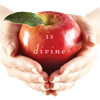I think a lot about change and how to flow with it. From my own tendencies to nest and check out, to coaching people to change their diet or cope with the economics of escalating food prices, there can be so much discomfort in changing. At times it seems impossible.
That’s why I like this NYT article on some of the research around change. The author suggests that there are different intensities of change, and if we stretch with small improvements fairly consistently, we tend to be more resilient and more successful. That feels true to me, though having the energy to continue to stretch can be challenging – I think our human nature is more equipped to do big rapid changes, then backslide, then change again. In interviewing some of the MDs with big diet books, they tend to be into the big rapid change, and say that if people see the difference they’ll be motivate to sustain. The little change strategy is perhaps a good yogic daily approach, with an occasional transformation to inspire. Happy reading, and happy Mother’s Day.
Here is the article:Â NYT Change Article

Every Bite Is Divine has been selected as a finalist for the Ben Franklin Award in the category of health & wellness. That’s the third time it’s been short-listed for a national book award, the others being:
2007 Nautilus Awards – honoring books on conscious living and positive social change.
2007 Best Books Awards – in the health and diet category.
The winners of the Ben Franklin will be announced in late May. We’ll keep you posted.
For decades, Jane Brody of the New York Times has been a bit of an idle of mine (and of most of my nutrition-communications colleagues). Here’s a great update she did today on moderate exercise – the closest thing we have to a magic bullet for chronic disease.
Jane Brody Moderate Physical Activity Update – NY Times Article
Did you know that there is a measure of the antioxidant activity of food? That’s the effect that all the phytochemicals – antioxidants and other micro-nutrients that we’ve learned so much about in just the last few years have in our bodies. The USDA has just expanded its database of foods and their ORAC (oxygen radical absorbancy capacity) scores. You can see the scores and learn more about what it means here.
What I love about this new information is that foods that I knew in my gut were healthy, but was told in my early nutrition classes were not rich in vitamins or minerals – things like beets and apples – are. The gut is right again – only now I know why. Foods with great ORAC scores are brightly colored fruits and veggies, herbs, and yes, chocolate.
Antioxidant activity in the body is thought to prevent nearly every chronic condition that so many Americans struggle with. So again, focusing on a plant based diet, along with the magic of movement, is what the medicine doctor ordered for 2008.
Be well.
Get ready for lots of new signage in your local grocery store – as reported in a NYTimes Article earlier this week, there are at least three rating systems under development to help consumers sift the wheat from the chaff as far as healthy choices go. The problem being that from what I can see, they only include packaged food. So, the healthiest foods in the grocery store – fresh fruits and vegetables – won’t be included. Why can I see how these undertakings will add to the confusion, while the smarties leading these efforts don’t?
Only when the healthiest foods -fruits and vegetables – are included, and the rating systems truly take into account all the aspects of what makes a food healthy – nutrient density, fiber, and freedom from chemical additives – only then will your best supermarket choices be obvious from a rating system. Until then, weighing brands of processed food will only add to the confusion and foster more unhealthy choices.
And until the day that your produce section is filled with gold stars, regardless of what these rating systems say, eating as many fresh unprocessed colorful fruits and vegetables as you possibly can is a great start. It’s as simple as that.
Warm Regards,
Annie
PS – I just heard from Dr. Katz that the system he’s working on, the Overall Nutrition Quality Index WILL include fresh fruits and veggies. All right!



